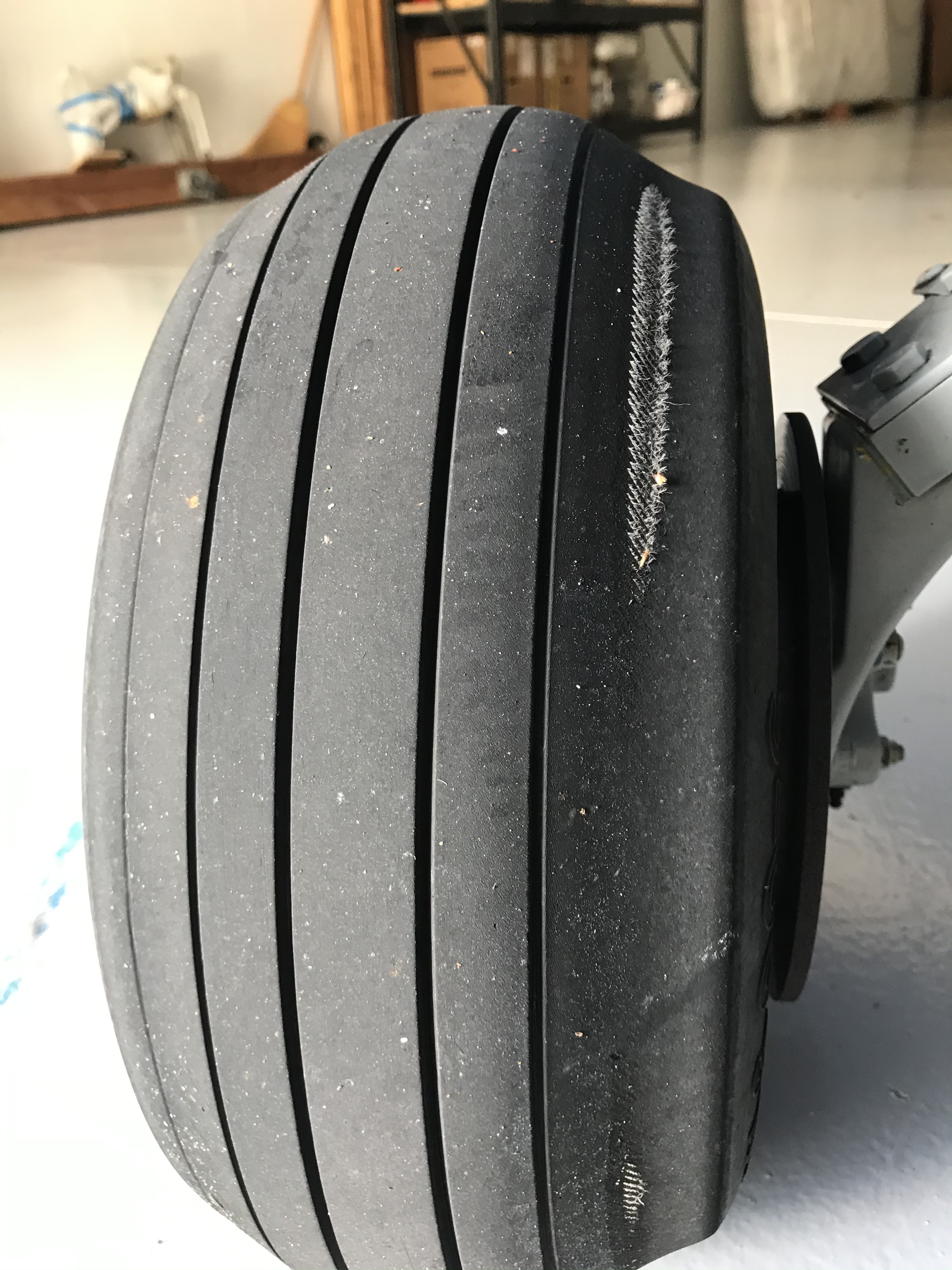Aircraft Tires - The number of wheels required for an airplane increases with the weight of the airplane because the weight of the airplane has to be distributed more. The tread pattern on aircraft tires is designed to provide stability in severe crosswind conditions, prevent hydroplaning and shed water for braking effect.
Aircraft tires also include fusible plugs (assembled on the inside of the tires) that are designed to melt at a certain temperature. Tires overheat during stalled flight or under maximum braking during a forced landing. The fuses provide a safe failure mode that prevents the tires from exploding by controlled deflation, thereby minimizing damage to the aircraft and surrounding facilities.
Aircraft Tires

Each of the twelve main wheels on the Boeing 777-300ER is 220 psi (15 bar; 1,500 kPa), weighs 120 kg (260 lb), is 134 cm (53 in) in diameter, and is replaced every 300 cycles. brakes are changed every 2000 cycles.
What Am I? Aircraft Tires
. The main chassis on the Concorde was normally inflated to 232 psi (16.0 bar) and the tail bumper tires were inflated to 294 psi (20.3 bar).
The high pressure and weight of the Concorde tires were significant factors in the disappearance of Air France Flight 4590.
Tests on aircraft tires have shown that they can withstand a maximum pressure of 800 psi (55 bar; 5,500 kPa) before bursting.
During the test, the tires must be filled with water to prevent the test chamber from bursting due to the energy released from the gas when the tire explodes.
Aircraft Tyre Stock Photo. Image Of Plane, Wheel, Tyre
Aircraft tires are usually inflated with nitrogen to minimize expansion and contraction due to sudden changes in temperature and air pressure during flight.
Dry nitrogen expands like other dry atmospheric gases (normal air is 80% nitrogen), but common compressed air sources may contain moisture, which increases the rate of expansion with temperature.
The requirement to use an inert gas, such as nitrogen, instead of air to fill the tires of certain transport categories of aircraft arose from at least three cases of oxygen in air-filled tires in combination with volatile gases. the tire overheated and exploded when it reached auto-ignition temperature. The use of inert gas to inflate tires eliminates the possibility of tire blowouts.

The aircraft tire industry is dominated by an oligopoly of four firms that control 85% of the market.
Airbus A380 Airplane's Tires At Sofia's Airport. Stock Photo, Picture And Royalty Free Image. Image 73677874
According to a 2013 report by Pelmar Engineering, the top four manufacturers of aircraft tires are:
Dunlop is the smallest player among the big companies, with revenues of £40m in a 2015 media report.
There are also several smaller industry players, especially in China. These manufacturers include Guilin Lanyu Aircraft Tire Developmt Co., a subsidiary of ChemChina established in 1980; An aircraft tire factory in Yinchuan, Ningxia, owned by the Singapore company Giti Tire; and Stury Tire in Qingdao, Shandong, which makes tires for Boeing 737s.
Weihai, Shandong-based Triangle Group announced cooperation with Harbin Institute of Technology in 2012 to design and manufacture aircraft wheels.
Aircraft Tire, Second Hand Aircraft Tire, Old Aircraft Tire Supplier
Japanese company Yokohama Rubber has been making aircraft tires since the 1940s, but has ceased operations and has not made any deliveries since 2009.
The company decided to shut down its aircraft unit due to low sales, which generated revenue of about ¥800 million, or US$8 million, in the 2008-9 fiscal year, and said the industry's future prospects lacked strong growth.
Aircraft tires for tractors, desser aircraft tires, 6.00 6 aircraft tires, retread aircraft tires, recapped aircraft tires, goodyear aircraft tires, used aircraft tires, aircraft tires for sale, michelin aircraft tires, dresser tires aircraft, aircraft tires and tubes, aircraft tundra tires